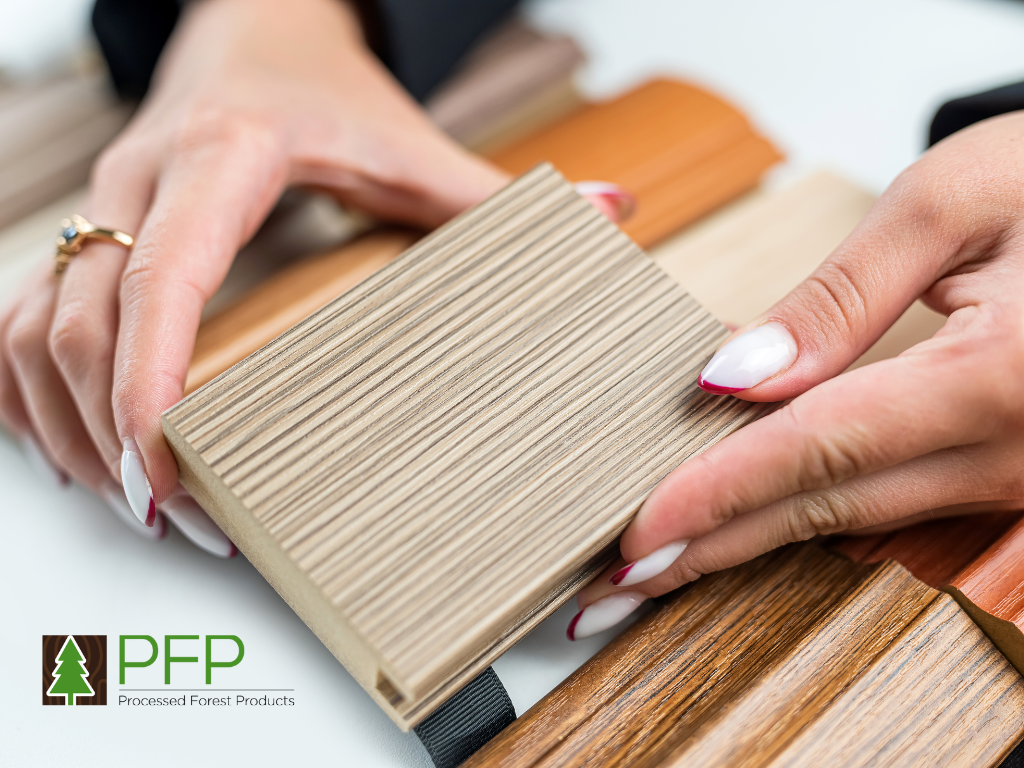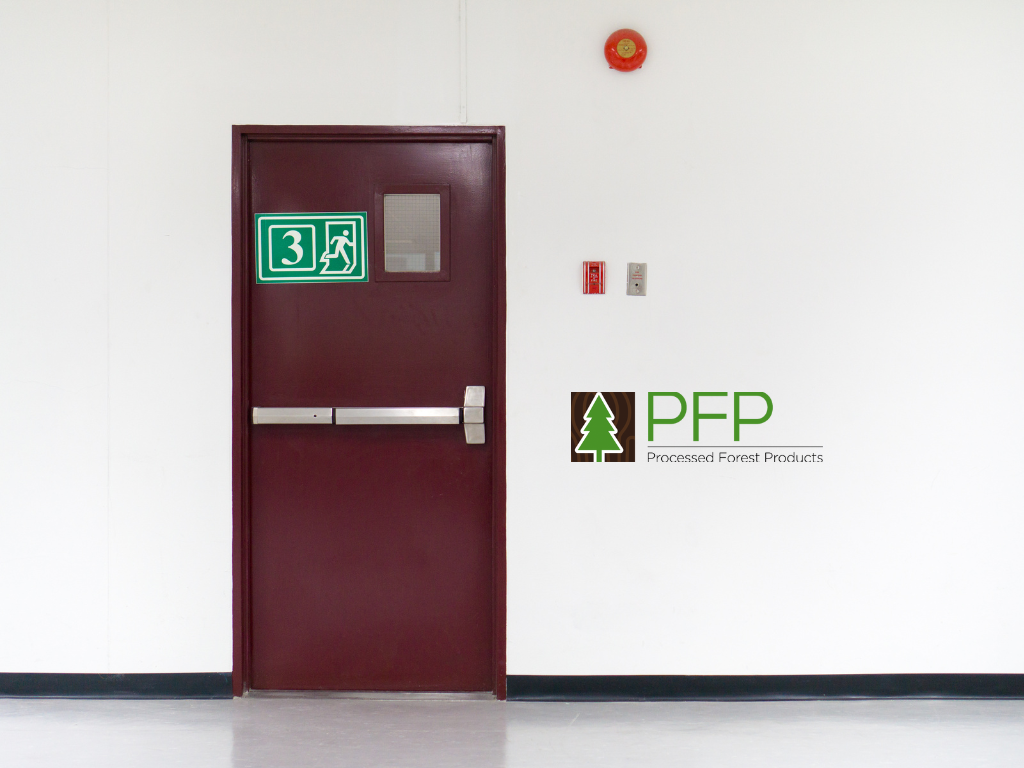When people think of commercial and residential fire doors, they often picture big, grey, industrial panels with no personality. But that’s not always the case. Today’s fire doors can be both functional and stylish.
The most important thing to remember is that fire doors are built to do a job. They are specially designed to hold back fire and smoke, giving people time to escape and helping prevent damage to the building. So, while some design flexibility is possible, safety always comes first.
Style doesn’t have to be sacrificed for safety
You can customise your fire door, but only in ways that won’t affect its fire rating. That includes choosing different finishes, handles, and adding vision panels — as long as they meet fire standards.
What you should avoid:
-
Trimming or cutting the door unless approved
-
Adding non-rated materials like foam or vinyl
-
Replacing seals or hardware without certified parts
So yes, style is possible, but only if you stay within the safety limits.
Can you use a veneer door on a fire-rated core?
Yes, you can — and many people do. A veneer door is often used to create a high-end look while still meeting fire safety standards. In most cases, fire-rated doors are built using a solid core that resists heat for a set period (usually 30 to 120 minutes). Over that core, a decorative veneer door skin can be added. This outer layer gives the door its appearance, whether you want a timber grain, a clean white finish, or something bold.
Important points to keep in mind:
-
The veneer must be applied using approved adhesives
-
The full door — including the veneer — must be tested and certified
-
You can’t simply stick any veneer board on and expect it to be safe
When in doubt, ask your door supplier or installer to confirm that the finished product complies with all required fire safety standards.
Exploring finishes: timber veneer panels and sustainable veneers

Designing with safety and style in mind
Want to bring a natural, modern look to your fire door? You can — especially with timber veneer panels and sustainable veneers. These options are popular in both homes and commercial spaces because they offer texture, warmth, and visual appeal without compromising fire safety.
Timber veneer panels are thin slices of wood pressed onto boards or doors. They can mimic native timbers like spotted gum or blackbutt or provide a sleek, modern grain. Sustainable veneers go a step further, being sourced from responsibly managed forests or using recycled timber layers.
When using these materials on commercial and residential fire doors, make sure:
-
They are pre-approved for fire-rated applications
-
The door core and veneer are tested together
-
The finish won’t crack or peel under high heat
Done right, your fire door won’t just be safe — it will also look like a stylish part of your overall design.
Can you repaint or refinish commercial and residential fire doors?
Sometimes you just want a fresh coat of paint. And the good news is, you can repaint most commercial and residential fire doors, as long as you follow a few simple rules. Firstly, always check the door’s existing finish. Some coatings may react poorly to standard paints. You also need to use fire-retardant paint that’s rated for use on fire doors.
Here are some dos and don’ts:
Do:
-
Lightly sand and clean the surface
-
Use fire-safe or fire-retardant paint
-
Apply thin, even layers
-
Avoid painting over seals or labels
Don’t:
-
Use high-gloss or flammable coatings
-
Paint edges where fire seals are installed
-
Attempt to cover up certification tags
If you’re unsure, speak with your supplier or a qualified installer. Repainting is a great way to refresh a fire door’s look — just make sure you’re not affecting its safety features in the process.
Using veneer board and wood veneer supplies responsibly
Not all boards are fire-safe
When working with veneer board or shopping for wood veneer supplies, it’s important to understand how these materials interact with fire safety standards. While veneer adds a beautiful finish to walls, furniture, and doors, not all veneers are approved for use on commercial and residential fire doors.
Veneer board typically consists of a thin wood layer bonded to MDF or plywood. On its own, it may look great but doesn’t offer any fire resistance. If you’re planning to use veneer board in or around fire-rated areas, always check the manufacturer’s specifications.
When buying wood veneer supplies, look for:
-
Certification that the product meets fire safety requirements
-
Details about adhesives and backing materials
-
Compatibility with fire rated board or fire-rated doors
If you’re not sure, ask your supplier or installer for confirmation. Using the wrong materials may not only void your door’s fire rating — it can also put your space at risk.
How fire rated board can be customised safely
A fire rated board is made from non-combustible materials like mineral fibre or gypsum, designed to delay heat and flame transfer. It’s commonly used in doors, ceilings, and wall linings in buildings that need to meet fire regulations. The good news? You can customise it — but only to a certain point.
Here’s what’s safe to do:
-
Trim or cut fire rated board only with the right tools and under guidance
-
Use approved paints or sealers that won’t reduce its rating
-
Add surface finishes like approved veneer door layers that are tested as a complete unit
What you should not do:
-
Drill large holes or apply heavy surface coverings
-
Use flammable materials for decoration
-
Install it without understanding the fire rating requirements
Fire rated board must be installed according to the specifications that come with the product. This includes thickness, edge protection, and fastener types. If altered incorrectly, the fire rating may no longer apply.
Tips for maintaining the look of commercial and residential fire doors

Keep it clean, safe, and good-looking
Once your commercial and residential fire doors are customised and installed, keeping them in good shape is easy — if you follow a few smart habits.
Here’s how to maintain both safety and style:
-
Regularly clean the surface
Use a damp cloth or mild cleaner. Avoid harsh chemicals that could damage timber veneer panels or sustainable veneers. -
Check for damage
Keep an eye out for chips, peeling layers, or swelling. These may affect the door’s ability to close or seal properly. -
Inspect fire seals and hinges
Fire doors rely on intumescent strips and strong hardware. Make sure nothing is painted over or blocked. -
Don’t modify the door
Once installed, avoid drilling into or attaching new fixtures to the door. This could reduce its fire resistance. -
Recoat carefully
If you plan to repaint, follow the steps mentioned earlier and stick to approved coatings.
A well-cared-for fire door can last many years, protecting your home or business while still looking stylish. With proper upkeep and the right materials, it’s easy to maintain both performance and appearance.
Final thoughts
Yes, you can customise commercial and residential fire doors — but it must be done with care. Whether you’re using a veneer door, applying timber veneer panels, or sourcing sustainable veneers, always prioritise safety alongside style. By choosing certified materials like fire rated board and verified wood veneer supplies, you can enjoy a beautiful finish that doesn’t compromise protection. If you’re ever unsure, speak to a licensed installer or supplier. That way, you get the best of both worlds — peace of mind and a space that feels like your own.

